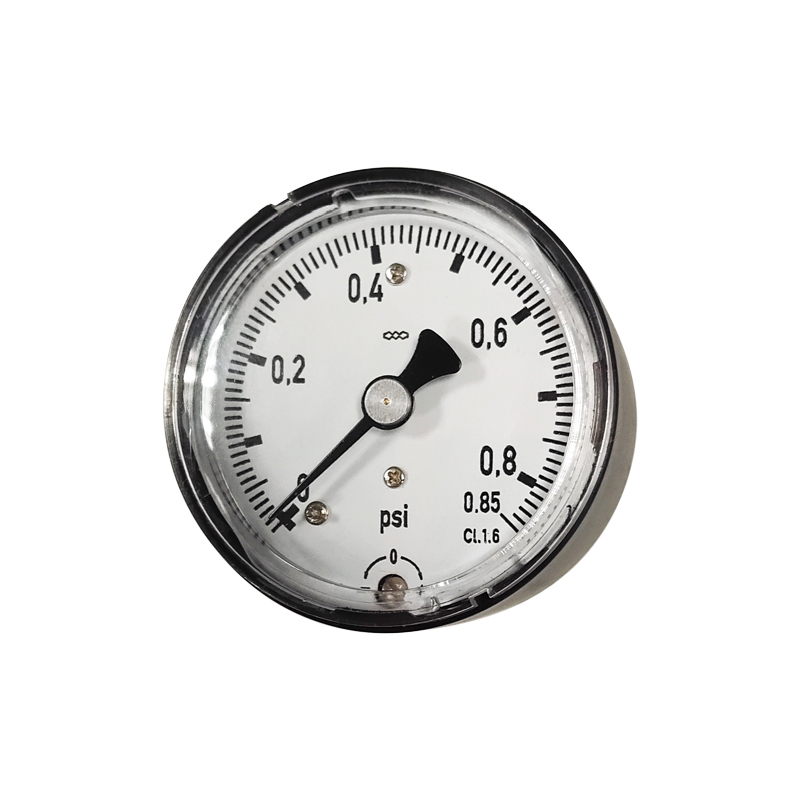
Août . 14, 2024 18:16 Back to list
Exploring the Features and Benefits of Differential Pressure Gauge with NPT Connections for Precise Measurements
Understanding Differential Pressure Gauges Focus on NPT Products
Differential pressure gauges are essential instruments used in various industrial applications for measuring the difference in pressure between two points. They play a crucial role in monitoring and controlling processes in fields such as HVAC, water treatment, and chemical manufacturing. This article will explore the significance of differential pressure gauges, focusing particularly on the NPT (National Pipe Thread) variant, which is widely used in piping systems.
What is a Differential Pressure Gauge?
At its core, a differential pressure gauge is designed to measure the pressure difference between two separate points in a system. This measurement is critical for ensuring that processes run smoothly and efficiently. For instance, in HVAC systems, differential pressure gauges help monitor air filter conditions and duct pressure, ensuring optimal performance and energy efficiency.
These gauges typically have two pressure ports one connected to the higher pressure point and the other to a lower pressure point. The difference between these two measurements is displayed on a dial, digital readout, or through other means depending on the design of the gauge. By continually monitoring the pressure difference, operators can detect problems early, such as clogged filters or blockages, allowing for prompt intervention.
The Importance of NPT in Differential Pressure Gauges
The National Pipe Thread (NPT) standard is a U.S. standard for tapered threads used on threaded pipes and fittings. The tapered design allows for a tight seal, which is crucial in applications involving fluids and gases. NPT fittings are prevalent in many industrial applications, making differential pressure gauges with NPT connections highly desirable.
Using NPT fittings in differential pressure gauges has several advantages
1. Sealing Efficiency The tapered thread design of NPT fittings ensures that a secure seal is achieved. This is particularly important in applications where pressure variations might lead to leaks, ensuring the integrity of the measurement.
differential pressure gauge 1 2 npt product

2. Versatility NPT gauges can be used with a vast range of piping systems, making them versatile for different industries. Whether in a chemical plant or a water treatment facility, the compatibility of NPT connections facilitates easier integration into existing systems.
3. Ease of Installation and Maintenance The standardization of NPT threads allows for easier installation and maintenance. Technicians can quickly connect or disconnect gauges without extensive modifications, reducing downtimes during maintenance processes.
4. Durability and Reliability Differential pressure gauges are often subjected to harsh conditions, from extreme temperatures to corrosive environments. Many NPT-compatible gauges are designed with durable materials that can withstand these challenging conditions, ensuring a long service life and reliable performance.
Applications of Differential Pressure Gauges with NPT Connections
NPT differential pressure gauges find applications across a wide range of sectors. In the oil and gas industry, they are used to monitor pressure drops in pipelines and equipment, detecting leaks and ensuring safety. In water and wastewater treatment plants, these gauges help monitor filter pressure, allowing for timely maintenance and avoiding failures.
Moreover, in pharmaceutical and biotech industries, maintaining precise pressure differentials is crucial for process control and product quality. NPT differential pressure gauges enable reliable monitoring in these sensitive applications, contributing to operational efficiency and safety.
Conclusion
Differential pressure gauges are integral instruments in modern industry, ensuring that processes operate smoothly and efficiently. The NPT variant of these gauges is particularly valuable due to its reliable sealing capabilities, versatility, and ease of use. As industries continue to evolve and demand more efficient solutions, the role of differential pressure gauges will become increasingly critical, making understanding their features and applications essential for professionals across various fields.
-
High-Precision 5 Valve Manifold Differential Pressure Gauge Suppliers
NewsApr.29,2025
-
High-Precision Diaphragm Vacuum Pressure Gauges Manufacturers & Quotes
NewsApr.29,2025
-
Omega Differential Pressure Gauges High Accuracy & Durability
NewsApr.28,2025
-
Low Pressure Differential Pressure Gauges Precision Solutions & Quotes
NewsApr.28,2025
-
Digital Diaphragm Pressure Gaauge Precision Measurement & OEM Quotes
NewsApr.28,2025
-
Differential Pressure Gauge China Price High-Accuracy & Best Quotes
NewsApr.28,2025
